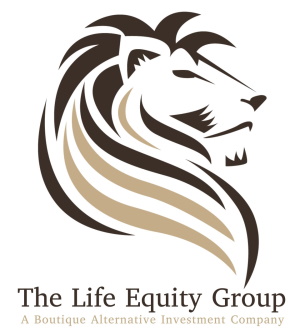Life Settlements
Best in Class Products, Services, and Solutions
The Life Settlements Video Presentation
The Life Settlement Video Presentation for Agents & Advisors
(Not Compliant for Public Use)

What Are Life Settlements?
A Life Settlement is a financial transaction where a policy owner, usually 75 or older sells their policy to a third-party investor for a sum of money which is greater than the cash surrender value (CSV) of the policy but less than the face value of the policy. Often the seller of these policies receives upwards to three to five times their surrender value.
The senior selling their policy has a limited life expectancy anywhere from 3 to 7 years verified by up to three (3) independent medical evaluations companies and put through medical actuarial tables. Their policies have a death benefit between $1MM upwards to $10MM. Seniors sell their policies because they no longer need, want or possibly can afford to make the premiums and perhaps were in danger of lapsing the policy.
Wealth Accumulation Through Life Settlements
60% or Higher Yield at Maturity (Minimum Walk Away Growth)
Our portfolio of life settlement policies features yields at maturity, the primary risk being time with ZERO market correlation.
The global life settlement provider company we have partnered with purchases multiple life settlement policies at a time and places them into a portfolio where qualified and accredited investors will own a fractional percentage of the total portfolio’s death benefit proceeds payable by America’s largest insurance carriers.
Benefits:
-
Whenever a policy matures within the portfolio the investors are paid
-
The average life expectancy of a portfolio is approximately 60-65 months
-
The average yield at maturity is 60%
-
Investors have a chance to Win Early, Win On-Time or Win Late
-
Annual yields investors could expect to earn is between 6.25% to 12.5% or higher
This investment strategy is only for qualified or accredited investors. Senior Life Settlements are a buy and hold investment strategy, thus the portion of investment capital that an investor should allocate to this investment is the CD portion or bond portion of their investment portfolio. We suggest no more than 20%. The investors’ capital invested in this asset class is paid from a highly rated US insurance carrier. The life policies used in this structure are all investment-grade US life insurance companies and all policies are past the contest-ability clause as well as suicide clause. To date, there’s never been one instance where a US life insurance a carrier has ever failed to pay out on a legitimate death benefit claim.
Other Benefits:
-
No stock market volatility
-
Great upside potential to earning above average rates of returns
-
Secured assets
-
True portfolio diversification
-
No fees, 100% of the investment capital is invested
-
Performs in any geopolitical climate
-
Qualified and Non-Qualified Funds accepted

History of Life Settlements in the US
Life insurance has been a core part of the U.S. financial fabric since its early development in the 1800s. A life insurance policy is a valuable asset. It provides financial benefits to loved ones, businesses or other beneficiaries who might otherwise experience financial hardships from the early or untimely death of the insured person, and it often provides resources that last well beyond the policy holder’s lifetime.
However, benefits can be also be unlocked from a life insurance policy during the policy holder’s lifetime because — like any asset that is personal property — life insurance can be sold. Selling one’s life insurance came into law dating back to 1911 in the US Supreme Court Grigsby vs. Russell.
Why are Life Settlements a Great Investment?
There has NEVER been an insurance company who has ever failed to payout on a legitimate death claim!
The promise to pay benefits by highly rated US Legal Reserve Life Insurance Companies is the mechanism that backs the Life Settlement asset class!

Why choosing Senior Life Settlements Works
A Senior Life Settlement is a socially responsible transaction that benefits seniors. When a senior insured decides, “I want to sell my life insurance policy,” it is well-documented that the seller will receive a significantly greater amount by selling their policy to a life settlement company than they will surrender it back to the carrier, or worse…stop paying the premiums and let the policy lapse worthless.
Senior Life Settlements benefit investors because they have a known cost and a known yield. Capstone’s proprietary Premium Reserve Management (PRM) System mitigates the risk of premium calls due to extended longevity by ensuring policy premiums are paid and the life insurance contracts remain in good standing. The Senior Life Settlement asset class creates many additional advantages for investors as well.

The Game Changer
Up till now investors who have invested in life settlements understood if the policy they were invested in outlived the premium reserves that were set aside for the policy they would have to pay their pro-rata share of the premiums. Below is how we mitigate the premium call risk.
Mitigating RISK: We have (3) inherent longevity risk hedging mechanisms:
- We take an average of three (3) Independent Medical Review Assessments on every insured with a minimum of at least two (2) critical health impairments. Mortality Probability Ratio: 50:50
- Initial Premium Reserves are funded at subscription by an amount equal to Life Expectancy (LE) plus an additional 2 years of premiums. Mortality Probability Ratio: 85:15
- All Premium Reserves are professionally cash managed to create additional yield to elongate PRMS Trust’s premium paying ability by approximately an additional two (2) years or LE+4. Mortality Probability Ratio: 97:3.
In the event of an early policy maturity where surplus premium remains all surplus premiums will be transferred to the PRMS Trust General Account. Where they will be retained, and cash managed to further elongate premium paying ability on any policy under management that remains un-matured at or beyond LE+4+. Mortality Probability Ratio: Statistically Insignificant.
The Game-Changer is our proprietary Premium Reserve Management System that we utilize which helps mitigate the “premium call” risk factor. By utilizing our PRMS our clients typically have eliminated approximately 95-97% of the risks associated when investing in life settlements.
FACT ‘vs’ FICTION
The unique characteristics and tangible advantages of the Senior Life Settlement alternative asset class are largely unknown and often misunderstood by both advisors and accredited investors.
MYTH 1 IT IS ILLEGAL FOR SOMEONE TO OWN A LIFE INSURANCE POLICY ON AN INDIVIDUAL WITH WHOM THEY HAVE NO INSURABLE INTEREST.
Legal opinions have found that the beneficial interest in an insurance policy can be legally transferred to a non-related individual. In the 1911 landmark case of Grigsby vs. Russell, US Supreme Court Chief Justice Oliver Wendell Holmes enacted law that life insurance is an asset, transferable at the will of the owner. Insurable interest is only a concern at original issue between the carrier and the insured.
MYTH 2 PURCHASING THE BENEFICIAL INTEREST IN A POLICY IS TAKING ADVANTAGE OF SENIORS.
Purchasing the beneficial interest in a policy can provide seniors with a significant cash inflow and the amount paid is typically far greater than the cash surrender value of selling their policy back to their carrier. A Senior Life Settlement transaction originates because the insured either no longer needs, wants or can afford their coverage and is in peril of their contract lapsing due to non-payment of premiums or has sought a surrender offer from the carrier. The Life Settlement industry exists because interested parties bid to purchase insured’s contracts at a price higher than a carrier’s surrender offer but less than the face amount. The Government Accountability Office (GAO) published a study that reports seniors can expect to receive an amount significantly greater than the surrender values offered by the carriers in the Life Settlement market. Several states mandate to insurance companies operating in those states that they must make those insureds at risk of lapse or seeking a surrender offer that a secondary market exists for the sale of their coverage. In some cases, seniors seek liquidity from this hidden asset, disguised as a liability, to defray the high cost of health care or simply to just improve the quality of their financial lives.
MYTH 3 THIS PRODUCT TAKES ADVANTAGE OF TERMINALLY ILL PEOPLE WHO ARE DESPERATE FOR FUNDS.
A Viatical Settlement by definition is the sale of insured’s coverage that is terminally ill and has a life expectancy of twenty-four (24) months or less. Capstone does not participate in any manner in the viatical market.
MYTH 4 A SENIOR LIFE SETTLEMENT IS A VERY RISKY PRODUCT.
This is one of the few investments where the purchaser knows in advance what the overall yield is going to be. The primary uncertainties are the time to policy/portfolio maturity and the need to create liquidity from other sources of capital. Capstone utilizes three independently produced life expectancy appraisals from medical underwriting companies to project the expected life span of an insured. The average life expectancy assessment projects the Senior Life Settlement purchaser’s expected holding period to policy maturity. Note, the life expectancy assessment is not guaranteed as exact human mortality cannot be accurately calculated. The supposition presented by the medical underwriters are based on large sample sizes of medical data and the specific health impairments of the insured.
MYTH 5 SENIOR LIFE SETTLEMENTS ARE TOO COMPLICATED FOR MY CLIENTS.
While the mechanics of this investment are complex, and such investments are only available to accredited investors, they function very much like a zero-coupon bond, a concept with which many investors are familiar. In simplest terms, an investor is a buying a dollar at a steep discount that they will receive in the future.
MYTH 6 THE SENIOR LIFE SETTLEMENT MARKET OFTEN SUBJECTS INVESTORS TO ADDITIONAL PREMIUM CALLS TO MEET ONGOING PREMIUM DEMANDS DUE TO EXTENDED LONGEVITY.
Capstone is very conservative in its estimates of life expectancies and has developed a unique method of projecting against the potential for premium calls with its proprietary Premium Reserve Management (PRM) System.
MYTH 7 HOW EVERYTHING WORKS AND THE FEE STRUCTURE IS JUST TOO CONFUSING.
Capstone believes in making hard, easy. The transparency of the process and the fact that Capstone has simplified the investment so that it has a known cost and a known yield in advance, takes the guess work out of the equation. Capstone seeks to provide immersive education and understanding of the Senior Life Settlement asset class that results in a value-added relationship between Capstone, the advisor and their clients.
Financial Strategies That Pay
Take your financial practice to the NEXT LEVEL!
-
Give yourself the opportunity to earn a generous 6-figure RESIDUAL income annually
-
Learn to build a successful agency of your own by recruiting others
-
Be able to provide clients alternative solutions that offer double-digit annual yields
-
Offer Alternatives that are designed to keep pace with or outperform traditional investments without taking on unnecessary, unpredictable risk
The information in this website is for AGENT USE ONLY and NOT FOR PUBLIC USE. The Life Equity Group is not a Registered Investment Advisor, Broker/Dealer, Financial Analyst, Financial Bank, or Securities Broker. Nothing herein is intended to constitute an offer, or the solicitation of an offer, to buy or subscribe for any securities to any person in any jurisdiction unless otherwise stated. Offers or solicitation which are made to buy or sell any securities are only to be made through the disclosure memorandum, otherwise, which contains important information about risks, fees, expenses and details. Unless otherwise stated, any securities described will not be registered under the US Securities Act of 1933 as amended, or any other act, and only accredited investors defined in 17 CFR 230.501(A) may purchase them. The information contained is not intended to be, and it does not constitute investment advice, tax advice, or an offer to buy or sell, or as a recommendation, endorsement, or sponsorship of any security, Company, or Fund.
